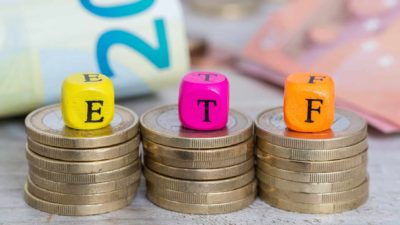The Australian stock market has the potential to generate a second income of $2,000, $10,000 or even more. I believe it's possible to unlock that investment cash flow by saving a small amount each week.
ASX dividend shares have the capability to provide a good dividend yield, growing dividends and capital growth.
Businesses don't need to have a dividend payout ratio of 100%, paying out all of their profit, to deliver a good dividend yield. Franking credits can be a big boost to the after-tax dividend yield from Australian companies because of their refundable nature.
If I were trying to deliver a second income of $2,000 by saving $35 a week, I'd pursue one of two strategies.
High-yield ASX dividend shares
Choosing stocks with a large dividend yield can mean investors don't need to grow their investment balance as high.
For example, if someone had a portfolio with a 2% dividend yield, they'd need a portfolio worth $100,000 to generate $2,000 of annual dividend income. However, if that portfolio had a 6% dividend yield, an investor would only need a portfolio worth $33,333 to generate $2,000 of dividend income.
Using the Moneysmart calculator, if I saved/invested $35 per week and that portfolio made returns of 10% per annum, it would take 11 years to reach a balance of $33,727, assuming all the dividends are re-invested. Meanwhile, it would take 20 years to reach a portfolio value of over $100,000.
For a portfolio of high-yield ASX dividend shares, I'd want to own businesses with good longer-term earnings drivers that operate in appealing industries. A high yield alone is not enough to make a good investment.
Examples of high-yield stocks I've written about recently include Metcash Ltd (ASX: MTS), GQG Partners Inc (ASX: GQG), Rural Funds Group (ASX: RFF), Medibank Private Ltd (ASX: MPL), Bailador Technology Investments Ltd (ASX: BTI) and Charter Hall Long WALE REIT (ASX: CLW).
However, these stocks usually have a lower earnings growth rate, partly because they are not re-investing as much profit as they could.
Dividend growth stocks
Another way to invest for a second income is to choose growing businesses that tend to increase their payouts for investors. Owning those ASX shares means our dividend income is increasing organically, hopefully at a pleasing rate.
These growing stocks typically start with a lower dividend yield because the market is taking into account the potential earnings growth in the coming years. Over time, those stocks can keep hiking the dividend, leading to a stronger yield on cost.
I look to buy these types of businesses for my dividend portfolio because earnings growth can promote share price growth. The market usually values a business based on its profit.
In terms of specific examples, I've invested in Washington H. Soul Pattinson and Co. Ltd (ASX: SOL), Brickworks Limited (ASX: BKW), Collins Foods Ltd (ASX: CKF) and Johns Lyng Group Ltd (ASX: JLG).
As I mentioned, the dividend yield is usually lower with these stocks. If we assume a grossed-up dividend yield of 3.5%, we would need a portfolio of $57,000.
Ultimately, I think the dividend growth stock method is a better choice for a second income because of the compounding effects of earnings growth and capital growth. The amount of dividends is important, but capital growth dollars are rewarding too, particularly if/when you sell shares.









